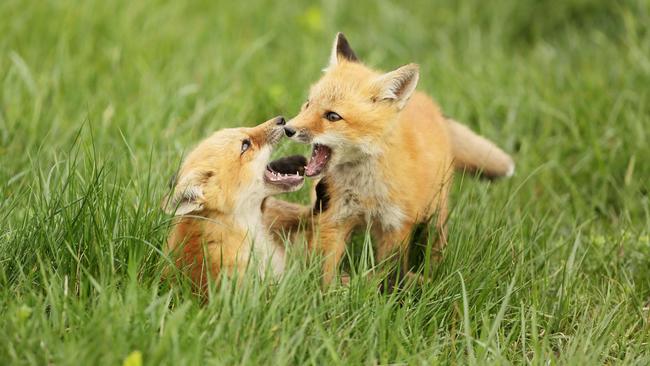Where the Wild Things are

[Link to original article in Hartford Magazine and photos by Paul Fusco]
Paul Fusco is hunting for bobcats on a late winter afternoon in the wilds of Connecticut, not far from his Oxford home. His weapon of choice is a digital spear — a hefty tripod armed with a camera and a 600-mm lens. He has seen his quarry prowling this scruffy hayfield in recent weeks. But his chances of seeing the well-camouflaged predator, much less of getting a clear shot, are small.
He has managed this photographic feat before, although not on this day. After three hours of waiting and watching, he's been skunked: no bobcats. And while secondary targets abound — hawks, ravens, killdeer, a beaver and songbirds — they are too distant or the light and background aren't right. Still, all is not lost. Fusco takes note of what he sees and where. He will be back.
The first requirement for being a wildlife photographer is time.
For more than three decades Paul Fusco has spent countless hours taking portraits of wild things. He shoots them before and after work — at dawn and dusk, when the light is best and his subjects are most active. He shoots during his lunch hour, on weekends, on vacation. He shoots on foot, from his car and out his office window at Sessions Woods Wildlife Management Area, where he works as a Connecticut DEEP environmental analyst and media specialist.
Fusco's photos have graced Audubon, Ducks Unlimited and Birder's World magazines, but most often they appear in an obscure local journal with a circulation of 6,000. Connecticut Wildlife Magazine is a bimonthly DEEP publication that chronicles its efforts to protect the state's ever-dwindling natural legacy. Fusco illustrates it by photographing birds and animals that hardly anyone ever sees — indeed, often creatures that few have ever heard of, like puritan tiger beetles and bristle-thighed curlews.
Consider, for example, his photos of the eastern whip-poor-will, a "species of concern" in the state. The concern is that no one knows how many remain, and one rarely hears its unmistakable nighttime song anymore. Even among serious birders, spying a whip-poor-will, whose motley color makes it indistinguishable from leaves, is as common as having an epiphany. So to photograph one ensconced in its nest, with two chicks, is quasi-miraculous.
Fusco "stumbled upon" this divine photo op: "I was walking along a trail looking for warblers, and the whip-poor-will came out and did her broken-wing thing in front of me, flopping around on the ground to distract me. So I knew the nest was nearby."
Fusco found the nest and came back another time, when the light was right. "Photography is painting with light," he explained. Then, careful to approach slowly and keep his distance — so as not to alarm mom — he clicked away.
The Connecticut native, who has worked for the DEEP since 1988, traces his environmental enthusiasm to camping trips with his parents into the wilds of northern New England. He was 8 when the bird-bug bit him: "I was walking by myself and I saw this bird flitting around by the side of the path. I got a good look at it. I had to go back and look it up in a field guide. I was just amazed by what it looked like — it was just so cool looking."
If one is going to compile a lifetime bird list, the black-throated blue warbler, a denizen of deep forests, is a good place to start. In the half-century since that fateful encounter, Fusco has been pursuing birds and other wild things from Connecticut to Alaska, from Canada to Tanzania.
When on the prowl, he keeps a low profile, often literally, as in army-crawling toward his subjects. Slow and steady gets the photo. He also avoids making eye contact, which is a threatening gesture in the wild. Knowing where his prey hangs out helps, too.
Fusco discovered a parliament (that's the term) of long-eared owls roosting during the day in a dense thicket with shrubs and vines interspersed with larger trees. He planned his approach accordingly: "There would be as many as eight owls there. I'd restrict my visits to once or twice a week and I'd only stay 20 minutes at the most, because I didn't want to disturb them. Over the course of one winter I was able to get them in a variety of situations. I found that on the coldest winter days they would be sunning themselves in a spot that would get early morning light. They'd be sleeping, and I would move in with my tripod very slowly and quietly and take a few pictures. Sometimes they would squint at me, but I was still so they were calm. I was maybe 30 yards away."
The results of all that time, knowledge and care are stunning, wildly so.